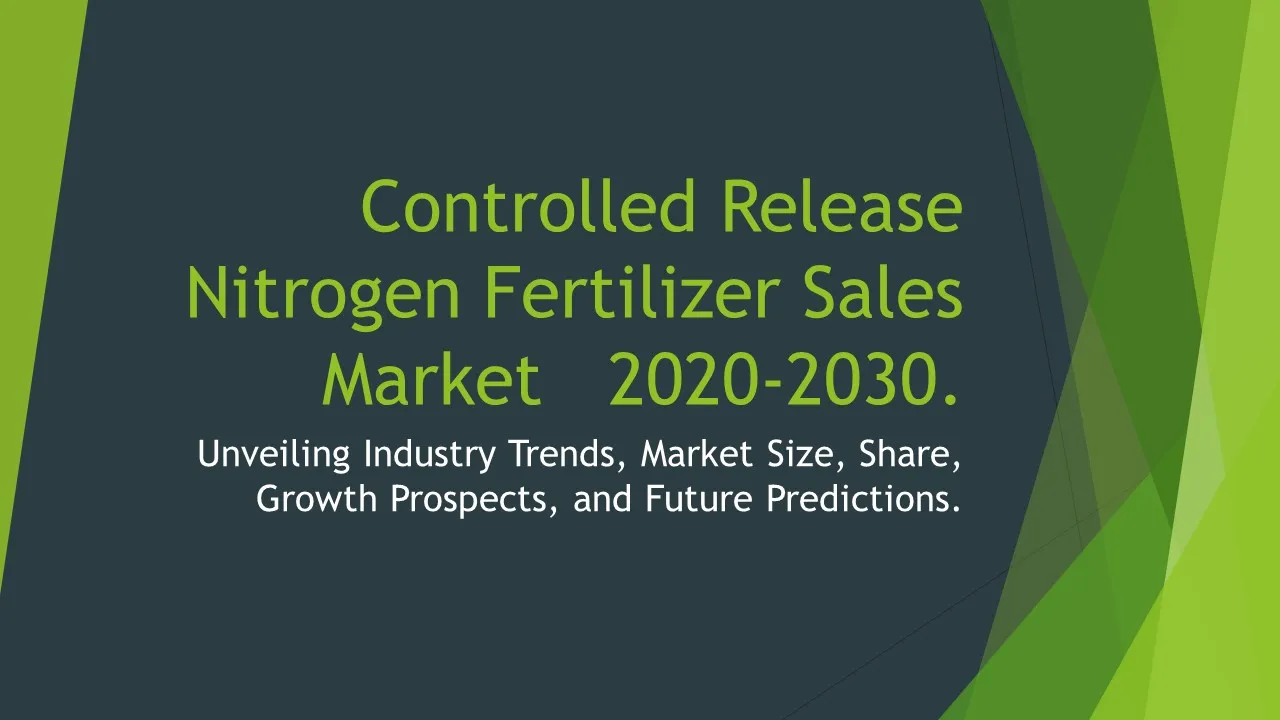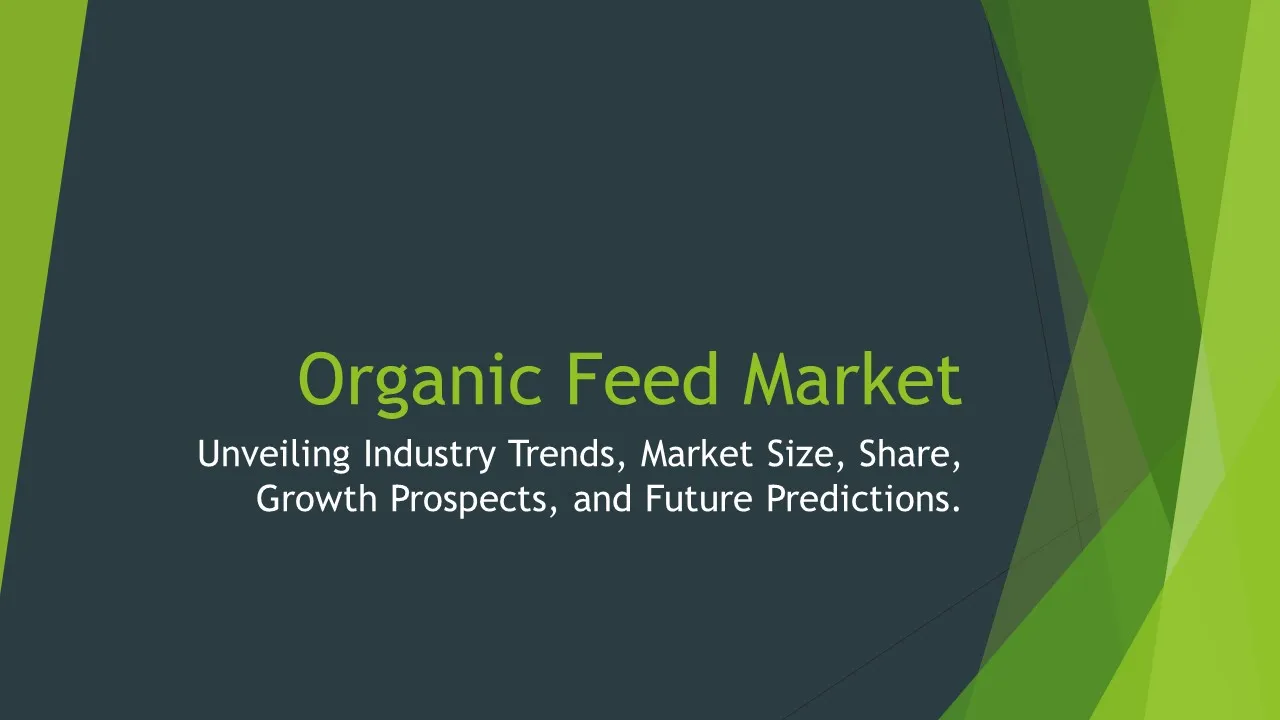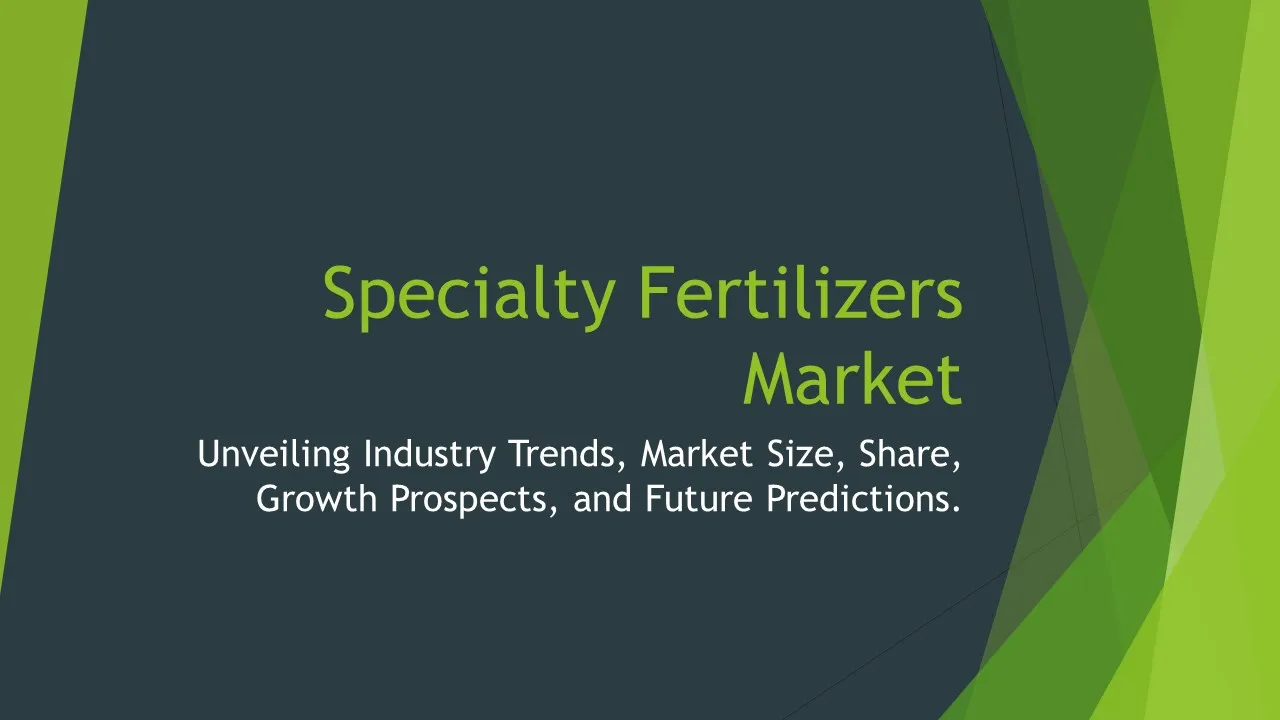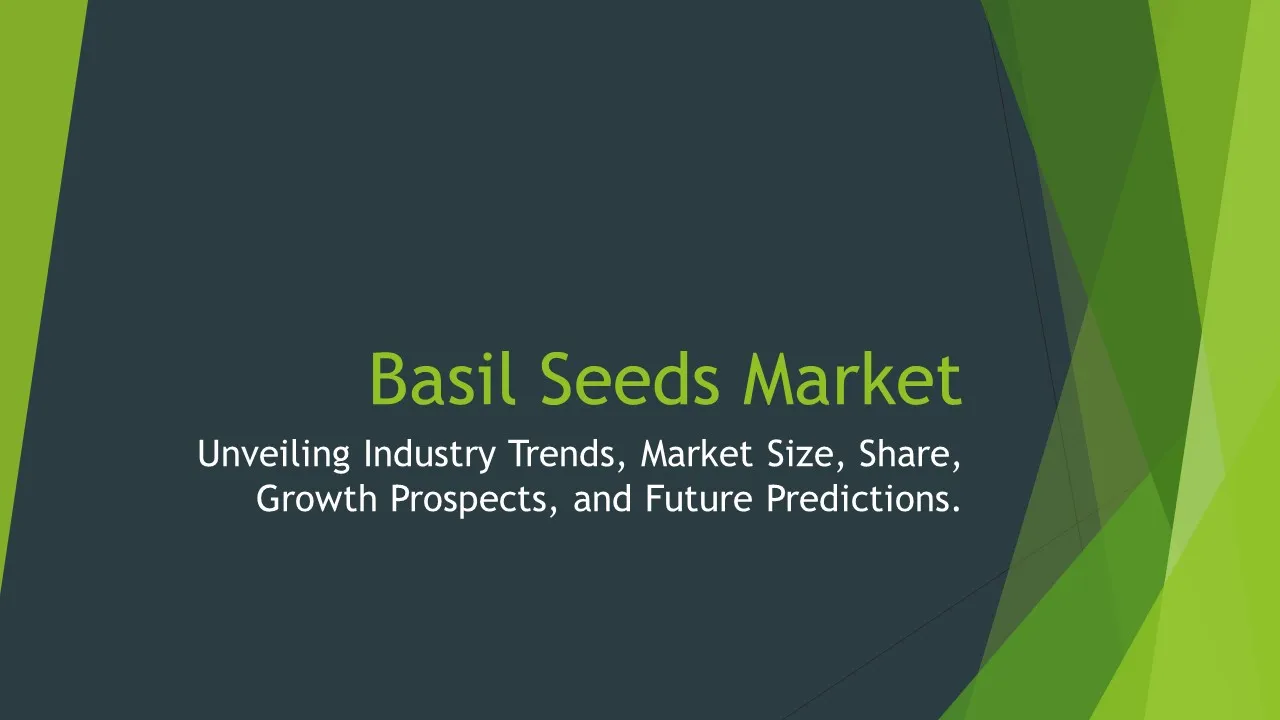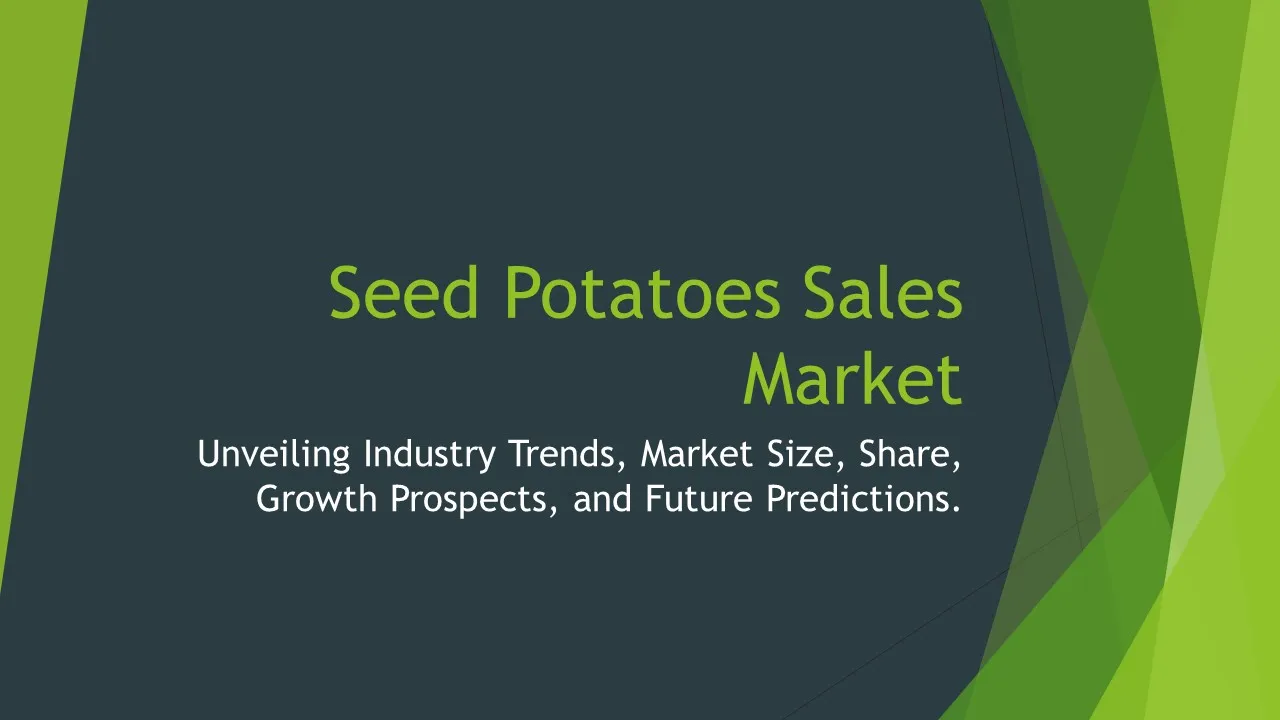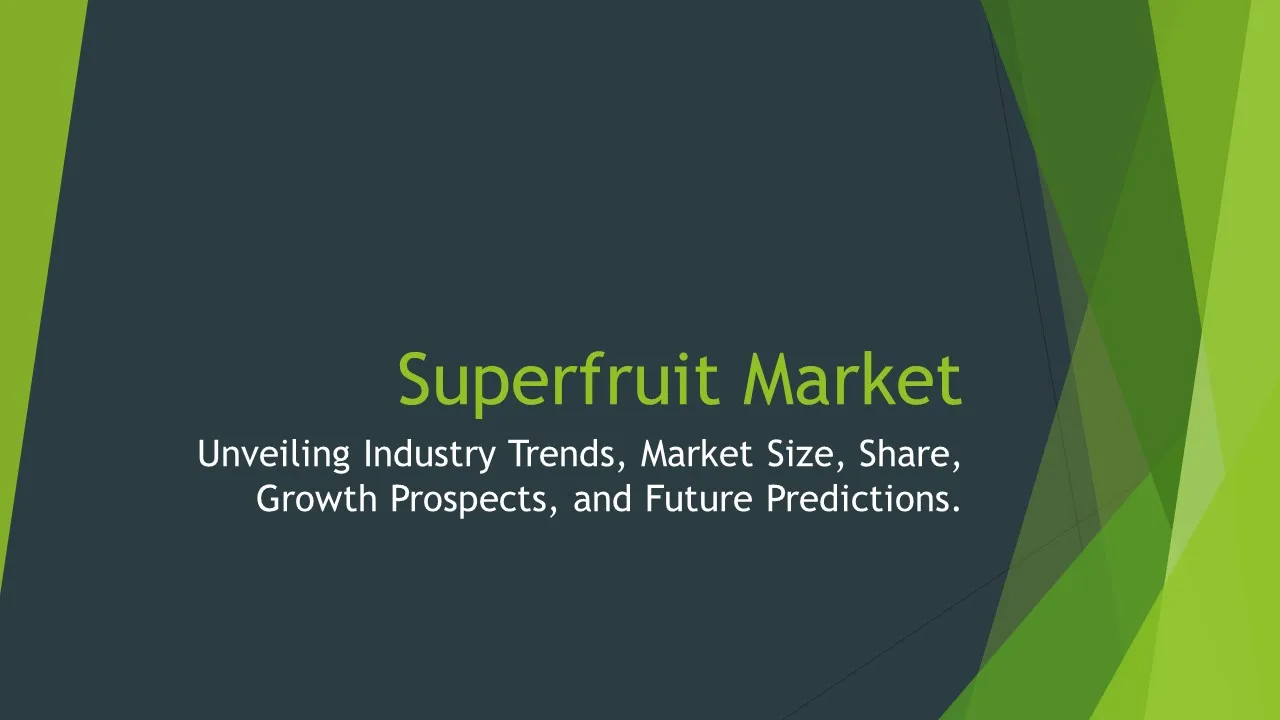Fertilizer Catalyst
Fertilizer Catalyst Market Segments - by Product Type (Chemical Fertilizer Catalysts, Bio-based Fertilizer Catalysts, Nano Fertilizer Catalysts, Liquid Fertilizer Catalysts, Controlled-release Fertilizer Catalysts), Application (Crop Fertilization, Horticulture, Turf & Ornamental, Others), Distribution Channel (Direct Sales, Indirect Sales), Ingredient Type (Metallic Catalysts, Enzyme Catalysts, Micronutrients), and Region (Asia Pacific, North America, Latin America, Europe, Middle East & Africa) - Global Industry Analysis, Growth, Share, Size, Trends, and Forecast 2025-2035
- Report Preview
- Table Of Content
- Segments
- Methodology
Fertilizer Catalyst Market Outlook
The global Fertilizer Catalyst Market is projected to reach approximately USD 5.2 billion by 2035, growing at a compound annual growth rate (CAGR) of around 7.2% during the forecast period from 2025 to 2035. This growth is primarily driven by the increasing demand for efficient agricultural practices and the need for enhanced crop yields to support the growing global population. Moreover, the rising awareness regarding sustainable farming and the adoption of innovative agricultural techniques are pushing the demand for advanced fertilizer catalysts. The expanding scope of research and development in the agricultural sector, combined with advancements in catalyst technology, is further propelling the market's growth. Additionally, government initiatives promoting the use of eco-friendly fertilizers are also expected to create a conducive environment for market expansion.
Growth Factor of the Market
Several key factors are contributing to the robust growth of the fertilizer catalyst market. First, the continuous rise in the global population necessitates increased food production, pushing farmers to adopt more efficient fertilization methods. The focus on enhancing agricultural productivity while minimizing environmental impact is driving innovations in catalyst technology. Furthermore, the increasing prevalence of precision farming, which relies on data-driven decisions to optimize crop yields, necessitates the use of advanced fertilizer catalysts that can improve nutrient uptake efficiency. The trend toward organic farming and the integration of biotechnological advancements in agriculture are also significant contributors, as farmers seek to reduce chemical inputs while maintaining productivity. Lastly, government regulations aimed at reducing harmful agricultural practices have spurred interest in the development and application of cleaner, more sustainable fertilizer solutions.
Key Highlights of the Market
- The global fertilizer catalyst market is expected to witness significant growth, reaching USD 5.2 billion by 2035.
- Innovative technologies in fertilizer catalysts are set to enhance crop yields and sustainability.
- Increased adoption of precision agriculture is driving the demand for advanced catalysts.
- Growing emphasis on organic and bio-based fertilizers is reshaping market dynamics.
- Government initiatives promoting sustainable farming are positively impacting market growth.
By Product Type
Chemical Fertilizer Catalysts:
Chemical fertilizer catalysts play a crucial role in the synthesis of traditional chemical fertilizers, such as urea, ammonia, and nitrates. These catalysts enhance the reaction rates and yield of fertilizer production processes, making them essential for large-scale agricultural applications. The increasing demand for chemical fertilizers, driven by the need for higher crop yields, has led to innovations in catalyst formulations that improve efficiency and reduce costs. Additionally, the development of environmentally friendly catalysts that minimize harmful by-products during production is gaining traction. The robust growth of the agriculture sector in developing regions, coupled with advancements in catalyst technologies, is expected to propel the demand for chemical fertilizer catalysts significantly over the forecast period.
Bio-based Fertilizer Catalysts:
Bio-based fertilizer catalysts are emerging as an alternative to traditional chemical catalysts, offering a more sustainable approach to agriculture. These catalysts are derived from natural sources and include enzymes and microorganisms that enhance nutrient availability and uptake in plants. The growing trend towards organic farming and sustainable agriculture is driving the demand for bio-based solutions, as farmers seek to minimize chemical inputs and their environmental impact. Recent advancements in biotechnology have led to the development of highly efficient bio-based catalysts that can significantly improve crop yields. As consumer preferences shift towards organic produce, the market for bio-based fertilizer catalysts is expected to expand rapidly, presenting growth opportunities for manufacturers.
Nano Fertilizer Catalysts:
Nano fertilizer catalysts are gaining attention for their ability to enhance nutrient delivery and absorption in plants. The unique properties of nanomaterials allow for controlled release and targeted application of nutrients, which can lead to improved crop performance and reduced fertilizer waste. With the rise of precision agriculture, nano catalysts are being utilized to optimize nutrient use efficiency and promote sustainable farming practices. Research in nanotechnology is continuously advancing, resulting in the development of innovative nano fertilizers that can address specific crop needs. The increasing adoption of nanotechnology in agriculture is expected to drive the growth of nano fertilizer catalysts, providing significant benefits to farmers looking to maximize productivity while minimizing environmental impact.
Liquid Fertilizer Catalysts:
Liquid fertilizer catalysts offer flexibility in application and can improve nutrient uptake efficiency in crops. This type of catalyst is particularly beneficial for foliar feeding and fertigation, where nutrients are delivered directly to the plant's leaves or soil. The growing popularity of liquid fertilizers in modern agriculture is driven by their ease of application and effectiveness in delivering essential nutrients. As farmers increasingly adopt liquid fertilization methods to enhance crop yields, the demand for liquid fertilizer catalysts is expected to rise. Furthermore, innovations in liquid catalyst formulations are being developed to optimize nutrient release rates and improve overall plant health, contributing to the market's growth.
Controlled-release Fertilizer Catalysts:
Controlled-release fertilizer catalysts are designed to release nutrients gradually over an extended period, ensuring a sustained supply of essential elements to plants. This technology minimizes nutrient loss due to leaching and volatilization, leading to improved nutrient use efficiency. As environmental concerns associated with traditional fertilizer applications grow, the demand for controlled-release solutions is increasing. These catalysts can significantly enhance crop productivity while reducing the environmental footprint of agricultural practices. The expanding focus on sustainable farming practices and the need for efficient nutrient management are expected to drive the market for controlled-release fertilizer catalysts in the coming years, offering significant benefits to both farmers and the environment.
By Application
Crop Fertilization:
Crop fertilization is one of the primary applications of fertilizer catalysts, as they enhance the efficiency of nutrient uptake in various crops. The rising demand for food production to meet the nutritional needs of a growing population is driving advancements in crop fertilization techniques. Fertilizer catalysts play a vital role in improving the effectiveness of various fertilizers, ensuring that the crops receive essential nutrients at the right time. This has led to increased adoption of advanced fertilizer solutions that incorporate catalysts, resulting in higher crop yields and better-quality produce. As global agricultural practices evolve, the segment of crop fertilization is expected to witness substantial growth, driven by the need for more sustainable and efficient farming methods.
Horticulture:
In horticulture, the use of fertilizer catalysts is becoming increasingly important as growers seek to optimize plant growth and flowering. Fertilizer catalysts enhance the nutrient availability in soil, ensuring that ornamental plants, vegetables, and fruits receive optimal nutrition. The horticultural sector is characterized by high-value crops, where even slight improvements in yield and quality can significantly impact profitability. The growing popularity of home gardening and landscaping is driving demand for advanced horticultural fertilizers, including those that utilize catalysts for improved performance. As consumer preferences shift towards high-quality, fresh produce, the market for fertilizer catalysts in horticulture is poised for growth, offering significant advantages in nutrient management and plant health.
Turf & Ornamental:
The turf and ornamental segment represents a specialized application of fertilizer catalysts, focusing on enhancing the health and aesthetics of lawns, golf courses, and ornamental plants. Fertilizer catalysts in this segment help maintain lush green turf and vibrant ornamentals by improving nutrient efficiency and uptake. The increasing popularity of recreational spaces and landscaped areas in urban environments is driving demand for effective turf and ornamental fertilizers. Additionally, the rise of sustainable landscaping practices is leading to a shift towards eco-friendly fertilizer solutions, including those with advanced catalyst formulations. As the focus on maintaining beautiful and sustainable green spaces continues, the demand for fertilizer catalysts in the turf and ornamental sector is expected to grow significantly.
Others:
The "Others" category encompasses additional applications of fertilizer catalysts, including their use in agricultural research, bioengineering, and specialty crop production. As scientists and researchers explore innovative ways to optimize fertilizer use and plant growth, the role of catalysts in these applications is becoming more prominent. This segment also includes niche markets where specific fertilizer solutions are required for unique crops or growing conditions. The continuous exploration of alternative applications for fertilizer catalysts presents a significant opportunity for market growth, as stakeholders seek to address specific challenges in agriculture and improve overall productivity.
By Distribution Channel
Direct Sales:
Direct sales of fertilizer catalysts occur when manufacturers sell their products directly to end-users, such as farmers and agricultural businesses. This distribution channel allows manufacturers to establish a strong relationship with their customers and gain insights into their specific needs. Direct sales are particularly effective in regions where personalized service and support are valued, as they enable manufacturers to provide tailored solutions and technical assistance. The growth of direct sales in the fertilizer catalyst market is driven by the increasing emphasis on customer satisfaction and the desire for more transparent pricing structures. As the market evolves, direct sales are expected to play a crucial role in fostering customer loyalty and promoting innovative products.
Indirect Sales:
Indirect sales channels involve intermediaries such as distributors, wholesalers, and retailers who facilitate the sale of fertilizer catalysts to end-users. This distribution method allows manufacturers to expand their reach and access a broader customer base. Indirect sales are essential in regions with fragmented agricultural markets, where local distributors can provide valuable market knowledge and logistical support. The growing trend of e-commerce is also influencing indirect sales, as online platforms allow for easier access to a wider range of products. As the demand for fertilizer catalysts increases across various agricultural sectors, the indirect sales channel is expected to grow, offering convenience and accessibility to farmers and agricultural businesses.
By Ingredient Type
Metallic Catalysts:
Metallic catalysts, such as those based on transition metals, are widely used in the production of various fertilizers due to their effectiveness in facilitating chemical reactions. These catalysts enhance the efficiency of nutrient synthesis processes, leading to higher yields of fertilizer products. The stability and durability of metallic catalysts make them suitable for large-scale agricultural applications, where consistent performance is crucial. As the need for efficient and cost-effective fertilizer production increases, the demand for metallic catalysts is expected to rise. Furthermore, advancements in catalyst design and synthesis are enhancing the performance of these materials, providing opportunities for growth in the metallic catalyst segment of the fertilizer market.
Enzyme Catalysts:
Enzyme catalysts are biological catalysts that play a significant role in the breakdown and synthesis of organic compounds in fertilizers. These catalysts enhance nutrient availability and uptake in plants, promoting healthier growth and development. The growing trend toward organic and sustainable farming practices is driving the demand for enzyme catalysts, as they align with environmentally-friendly agricultural practices. The use of enzymes in fertilizer formulations is gaining popularity due to their ability to improve soil health and enhance the overall effectiveness of fertilizers. As the market for organic fertilizers continues to expand, the enzyme catalyst segment is expected to witness substantial growth, driven by increasing consumer preferences for natural products.
Micronutrients:
Micronutrients are essential elements required by plants in small quantities for optimal growth and development. Fertilizer catalysts that incorporate micronutrients enhance the nutrient profile of fertilizers, ensuring that plants receive a well-rounded diet for healthy growth. The rising awareness of the importance of micronutrients in crop production is driving demand for fertilizers that contain these essential elements. Additionally, the increasing focus on soil health and sustainable farming practices is further propelling the use of micronutrient-enhanced fertilizers. As the agricultural sector continues to prioritize balanced nutrition for crops, the micronutrient catalyst segment is expected to experience significant growth, contributing to overall improved agricultural productivity.
By Region
The Fertilizer Catalyst Market is characterized by distinct regional dynamics, with varying levels of demand and regulatory frameworks influencing growth. In North America, the market is expected to witness robust growth, driven by the increasing adoption of advanced agricultural practices and the growing emphasis on sustainable farming solutions. The region's agricultural sector is highly developed, and there is a strong demand for innovative products that improve crop productivity and reduce environmental impact. Furthermore, the presence of key market players and ongoing research and development initiatives are expected to contribute to the market's growth in North America. The CAGR for this region is projected to be around 8.5% during the forecast period, reflecting the increasing investment in agricultural technologies.
In contrast, the Asia Pacific region is anticipated to dominate the Fertilizer Catalyst Market due to the high population density and significant agricultural activity. Countries such as India and China are major players in global agriculture, necessitating the use of advanced fertilizer solutions to optimize yields. The increasing focus on food security and sustainable farming practices in these countries is driving the adoption of fertilizer catalysts. The market in Asia Pacific is expected to grow at a CAGR of around 6.8%, supported by government initiatives aimed at promoting modern agricultural practices and the use of efficient fertilizers. The demand for fertilizer catalysts in this region is expected to rise significantly, reflecting the urgent need to improve agricultural productivity amidst rising food demands.
Opportunities
The fertilizer catalyst market presents numerous opportunities for growth, particularly in the realm of innovative technologies and product development. With the increasing focus on sustainable agriculture, there is a growing demand for environmentally friendly fertilizer solutions that enhance nutrient efficiency while minimizing environmental impact. Manufacturers have the opportunity to invest in research and development to create advanced catalyst formulations that leverage biotechnological advancements and nanotechnology. These innovations can lead to the development of fertilizers that not only improve crop yields but also contribute to soil health and sustainability. Additionally, as farmers become more aware of the benefits of using advanced catalysts, the market for specialized formulations tailored to specific crops and growing conditions is likely to expand, creating further opportunities for manufacturers.
Moreover, the rising trend of organic farming offers significant opportunities for the fertilizer catalyst market. As consumer preferences shift towards organic produce, farmers are increasingly seeking bio-based and natural fertilizer solutions that align with sustainable practices. This shift presents a unique opportunity for manufacturers to develop innovative bio-based fertilizer catalysts that cater to the growing demand for organic products. By focusing on developing products that meet the needs of organic farmers, companies can tap into a lucrative market segment that is expected to witness substantial growth in the coming years. Additionally, collaboration between agricultural researchers, manufacturers, and farmers can lead to the development of tailored catalyst solutions that address specific agricultural challenges, further enhancing market opportunities.
Threats
Despite the promising outlook for the fertilizer catalyst market, there are several threats that could hinder its growth. One significant challenge is the fluctuating prices of raw materials used in the production of fertilizer catalysts. Volatility in commodity markets can impact production costs and profit margins, making it difficult for manufacturers to maintain competitive pricing. Moreover, the increasing regulatory scrutiny surrounding agricultural chemicals and fertilizers may lead to stricter compliance requirements, resulting in higher operational costs for manufacturers. These regulations can limit the availability of certain chemical catalysts, pushing the market toward alternative solutions that may not be as established or commercially viable. Additionally, the growing awareness of environmental issues associated with fertilizers may lead to public backlash against certain chemical products, further complicating market dynamics.
A potential restraining factor for the fertilizer catalyst market is the slow adoption of new technologies among traditional farmers. While advanced fertilizer catalysts offer significant benefits, some farmers may be hesitant to switch from conventional fertilizers due to a lack of awareness, financial constraints, or resistance to change. This reluctance can limit the market's growth potential, especially in regions where traditional farming practices are deeply rooted. Education and outreach initiatives that highlight the advantages of advanced fertilizer catalysts are essential to overcoming these challenges and promoting adoption. Furthermore, the competition from alternative agricultural practices, such as permaculture and regenerative farming, which focus on minimizing fertilizer use, may pose a challenge to the traditional fertilizer catalyst market, necessitating adaptation and innovation among existing players.
Competitor Outlook
- Yara International ASA
- CF Industries Holdings, Inc.
- Hindalco Industries Ltd.
- Arab Potash Company
- PotashCorp
- AkzoNobel N.V.
- Deepak Fertilisers and Petrochemicals Corporation Ltd.
- Syngenta AG
- Nutrien Ltd.
- FMC Corporation
- ICL Group Ltd.
- Haifa Group
- TruGreen Ltd.
- Verdesian Life Sciences
- Agrium Inc.
The competitive landscape of the fertilizer catalyst market is characterized by a diverse range of companies, from large multinational corporations to specialized regional players. Key players are focused on product innovation, operational efficiency, and strategic partnerships to enhance their market position. Research and development are critical components of this competitive strategy, as companies seek to develop advanced catalysts that improve nutrient efficiency and meet the growing demand for sustainable agricultural solutions. Players in this market are also investing in technology advancements and eco-friendly solutions to cater to changing consumer preferences and regulatory requirements. Moreover, mergers and acquisitions are common in this sector, allowing companies to expand their product offerings and gain a competitive edge.
Among the prominent players in the fertilizer catalyst market, Yara International ASA stands out as a leader in the production of nitrogen-based fertilizers and catalysts. The company's commitment to sustainability through innovative fertilizer solutions has positioned it as a key player in the market. Yara continues to invest in research and development programs aimed at creating environmentally friendly fertilizers that enhance crop productivity while minimizing environmental footprints. Additionally, CF Industries Holdings, Inc. is recognized for its advanced nitrogen production technologies and its focus on enhancing nutrient efficiency through innovative catalyst formulations. The company is committed to sustainability initiatives, which align with the growing demand for eco-friendly agricultural solutions.
Another notable player is Nutrien Ltd., one of the largest providers of crop inputs and services worldwide. The company has a diverse portfolio of fertilizers and catalysts tailored to various agricultural needs, coupled with a focus on sustainable practices. Nutrien's commitment to addressing the challenges of global food security while promoting sustainable agriculture is a key driver of its competitive strategy. Similarly, ICL Group Ltd. is known for its extensive range of fertilizers and specialty products, including controlled-release fertilizers that utilize advanced catalyst technologies. The company's innovative approach to nutrient management and its emphasis on sustainability have solidified its position as a significant contender in the fertilizer catalyst market.
1 Appendix
- 1.1 List of Tables
- 1.2 List of Figures
2 Introduction
- 2.1 Market Definition
- 2.2 Scope of the Report
- 2.3 Study Assumptions
- 2.4 Base Currency & Forecast Periods
3 Market Dynamics
- 3.1 Market Growth Factors
- 3.2 Economic & Global Events
- 3.3 Innovation Trends
- 3.4 Supply Chain Analysis
4 Consumer Behavior
- 4.1 Market Trends
- 4.2 Pricing Analysis
- 4.3 Buyer Insights
5 Key Player Profiles
- 5.1 PotashCorp
- 5.1.1 Business Overview
- 5.1.2 Products & Services
- 5.1.3 Financials
- 5.1.4 Recent Developments
- 5.1.5 SWOT Analysis
- 5.2 Agrium Inc.
- 5.2.1 Business Overview
- 5.2.2 Products & Services
- 5.2.3 Financials
- 5.2.4 Recent Developments
- 5.2.5 SWOT Analysis
- 5.3 Haifa Group
- 5.3.1 Business Overview
- 5.3.2 Products & Services
- 5.3.3 Financials
- 5.3.4 Recent Developments
- 5.3.5 SWOT Analysis
- 5.4 Syngenta AG
- 5.4.1 Business Overview
- 5.4.2 Products & Services
- 5.4.3 Financials
- 5.4.4 Recent Developments
- 5.4.5 SWOT Analysis
- 5.5 Nutrien Ltd.
- 5.5.1 Business Overview
- 5.5.2 Products & Services
- 5.5.3 Financials
- 5.5.4 Recent Developments
- 5.5.5 SWOT Analysis
- 5.6 TruGreen Ltd.
- 5.6.1 Business Overview
- 5.6.2 Products & Services
- 5.6.3 Financials
- 5.6.4 Recent Developments
- 5.6.5 SWOT Analysis
- 5.7 AkzoNobel N.V.
- 5.7.1 Business Overview
- 5.7.2 Products & Services
- 5.7.3 Financials
- 5.7.4 Recent Developments
- 5.7.5 SWOT Analysis
- 5.8 ICL Group Ltd.
- 5.8.1 Business Overview
- 5.8.2 Products & Services
- 5.8.3 Financials
- 5.8.4 Recent Developments
- 5.8.5 SWOT Analysis
- 5.9 FMC Corporation
- 5.9.1 Business Overview
- 5.9.2 Products & Services
- 5.9.3 Financials
- 5.9.4 Recent Developments
- 5.9.5 SWOT Analysis
- 5.10 Arab Potash Company
- 5.10.1 Business Overview
- 5.10.2 Products & Services
- 5.10.3 Financials
- 5.10.4 Recent Developments
- 5.10.5 SWOT Analysis
- 5.11 Yara International ASA
- 5.11.1 Business Overview
- 5.11.2 Products & Services
- 5.11.3 Financials
- 5.11.4 Recent Developments
- 5.11.5 SWOT Analysis
- 5.12 Verdesian Life Sciences
- 5.12.1 Business Overview
- 5.12.2 Products & Services
- 5.12.3 Financials
- 5.12.4 Recent Developments
- 5.12.5 SWOT Analysis
- 5.13 Hindalco Industries Ltd.
- 5.13.1 Business Overview
- 5.13.2 Products & Services
- 5.13.3 Financials
- 5.13.4 Recent Developments
- 5.13.5 SWOT Analysis
- 5.14 CF Industries Holdings, Inc.
- 5.14.1 Business Overview
- 5.14.2 Products & Services
- 5.14.3 Financials
- 5.14.4 Recent Developments
- 5.14.5 SWOT Analysis
- 5.15 Deepak Fertilisers and Petrochemicals Corporation Ltd.
- 5.15.1 Business Overview
- 5.15.2 Products & Services
- 5.15.3 Financials
- 5.15.4 Recent Developments
- 5.15.5 SWOT Analysis
- 5.1 PotashCorp
6 Market Segmentation
- 6.1 Fertilizer Catalyst Market, By Application
- 6.1.1 Crop Fertilization
- 6.1.2 Horticulture
- 6.1.3 Turf & Ornamental
- 6.1.4 Others
- 6.2 Fertilizer Catalyst Market, By Product Type
- 6.2.1 Chemical Fertilizer Catalysts
- 6.2.2 Bio-based Fertilizer Catalysts
- 6.2.3 Nano Fertilizer Catalysts
- 6.2.4 Liquid Fertilizer Catalysts
- 6.2.5 Controlled-release Fertilizer Catalysts
- 6.3 Fertilizer Catalyst Market, By Ingredient Type
- 6.3.1 Metallic Catalysts
- 6.3.2 Enzyme Catalysts
- 6.3.3 Micronutrients
- 6.4 Fertilizer Catalyst Market, By Distribution Channel
- 6.4.1 Direct Sales
- 6.4.2 Indirect Sales
- 6.1 Fertilizer Catalyst Market, By Application
7 Competitive Analysis
- 7.1 Key Player Comparison
- 7.2 Market Share Analysis
- 7.3 Investment Trends
- 7.4 SWOT Analysis
8 Research Methodology
- 8.1 Analysis Design
- 8.2 Research Phases
- 8.3 Study Timeline
9 Future Market Outlook
- 9.1 Growth Forecast
- 9.2 Market Evolution
10 Geographical Overview
- 10.1 Europe - Market Analysis
- 10.1.1 By Country
- 10.1.1.1 UK
- 10.1.1.2 France
- 10.1.1.3 Germany
- 10.1.1.4 Spain
- 10.1.1.5 Italy
- 10.1.1 By Country
- 10.2 Asia Pacific - Market Analysis
- 10.2.1 By Country
- 10.2.1.1 India
- 10.2.1.2 China
- 10.2.1.3 Japan
- 10.2.1.4 South Korea
- 10.2.1 By Country
- 10.3 Latin America - Market Analysis
- 10.3.1 By Country
- 10.3.1.1 Brazil
- 10.3.1.2 Argentina
- 10.3.1.3 Mexico
- 10.3.1 By Country
- 10.4 North America - Market Analysis
- 10.4.1 By Country
- 10.4.1.1 USA
- 10.4.1.2 Canada
- 10.4.1 By Country
- 10.5 Fertilizer Catalyst Market by Region
- 10.6 Middle East & Africa - Market Analysis
- 10.6.1 By Country
- 10.6.1.1 Middle East
- 10.6.1.2 Africa
- 10.6.1 By Country
- 10.1 Europe - Market Analysis
11 Global Economic Factors
- 11.1 Inflation Impact
- 11.2 Trade Policies
12 Technology & Innovation
- 12.1 Emerging Technologies
- 12.2 AI & Digital Trends
- 12.3 Patent Research
13 Investment & Market Growth
- 13.1 Funding Trends
- 13.2 Future Market Projections
14 Market Overview & Key Insights
- 14.1 Executive Summary
- 14.2 Key Trends
- 14.3 Market Challenges
- 14.4 Regulatory Landscape
Segments Analyzed in the Report
The global Fertilizer Catalyst market is categorized based on
By Product Type
- Chemical Fertilizer Catalysts
- Bio-based Fertilizer Catalysts
- Nano Fertilizer Catalysts
- Liquid Fertilizer Catalysts
- Controlled-release Fertilizer Catalysts
By Application
- Crop Fertilization
- Horticulture
- Turf & Ornamental
- Others
By Distribution Channel
- Direct Sales
- Indirect Sales
By Ingredient Type
- Metallic Catalysts
- Enzyme Catalysts
- Micronutrients
By Region
- Asia Pacific
- North America
- Latin America
- Europe
- Middle East & Africa
Key Players
- Yara International ASA
- CF Industries Holdings, Inc.
- Hindalco Industries Ltd.
- Arab Potash Company
- PotashCorp
- AkzoNobel N.V.
- Deepak Fertilisers and Petrochemicals Corporation Ltd.
- Syngenta AG
- Nutrien Ltd.
- FMC Corporation
- ICL Group Ltd.
- Haifa Group
- TruGreen Ltd.
- Verdesian Life Sciences
- Agrium Inc.
- Publish Date : Jan 20 ,2025
- Report ID : AG-627
- No. Of Pages : 100
- Format : |
- Ratings : 4.5 (110 Reviews)



